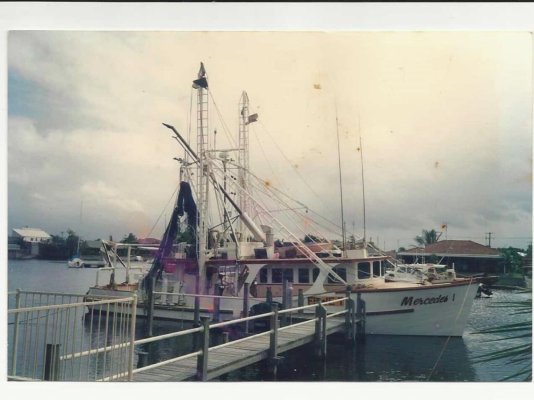So to get benefit from the ART you need to either increase its size or place it higher up. Both decrease stability.
If you want to
maximize the effect from an ART you can increase its size or place higher up. To maximize benefit, larger and higher has its limitations and realize that one can't get gyro results from an ART. The only article I read where stability with an ART was a safety issue was a fishing boat where the crew had access to the fill on the tank. They increased the fill for increased comfort in relatively mild seas. It caused stability issues in heavy seas. Too much of a good thing. The captain drained the tank and supposedly didn't use it again. 20 lashes all round to the crew. Was the problem the viability of the ART or the ignorance of the crew?
I wonder why in the world you would want to decrease the stability of a ocean going vessel.
There are many traditional reasons. One is to have food, water, crew aboard.
Another is to have a raised bridge for better visibility. In the case of trawlers, a flying bridge from which to wave to the little people. Maybe that's not the reason, but I had difficulty finding a Taiwan trawler that didn't have an upper exposed helm. I would certainly exchange the dead weight aloft of an upper helm in favor of an ART.
Particularly with a system you could not turn off with the flick of a switch. Draining a ART would take time.
If one uses a garden hose. My experimental bladder has a 2.5 inch drain. That takes a few rolls to empty. If the ART was a tank with quick release ends, one roll period and the water is gone. But that may addresses a false concern. Not often, if ever, does one encounter an instantaneous dangerous sea condition. If such weather phenomena do occur, spinning up a gyro stabilization system would rate the worst system to address a magic wave. (For those who find irrational fears entertaining, I suggest the movie
The Last Wave, 1977 directed by Peter Weir.)
If the device was placed outside the accommodations it would involve risk to the operator.
Not sure what this refers to, but I'm interesting and any risk to the operator.
Seems there’s a conflict between stability and some comfort measures. It’s unfortunate the term stabilization is used for these devices (fins, fish, Magnus gyros etc.). None improve stability. They only improve comfort.
And that is my only goal. I'm not looking to improve stability so that I can challenge the oceans of the world (which may be the OP's goal). I'm looking only at increasing comfort in my world (inside passages in the PNW). Increasing comfort, but not to the extent of compromising stability (i.e., safety).
Rolling chocks, bilge or full keels provide resistance to roll by increasing turbulence and/or drag with transverse motion. When a vessel is parallel to a wave face it needs to slide down that wave face laterally. If its immersed hull catches its at risk of rolling over.
And if equipped with paravanes, the vessel slides down the wave face, the vane pulls free from the surface of the following trough, flies through the air, hits the pilot house, killing the captain (that story is on the internet). It's always something. Everybody gets to make their own risk assessment, whether based on fact, or lore, or a combination.
1) if you never see a storm, rogue or large wave these risks may not be encountered. . . . 2) If you do passages in a small power vessel you are in a very select group. Would suggest you do not incur any risk (even if small) you need not incur. There’s enough stuff to worry about without adding to your list.
I plan on staying in group #1 given my cruising grounds. Everything above my CG (which, it turns out, is basically all "comfort" items) will be evaluated in terms of safety, with the understanding that there need be a risk/benefit analysis. Freezers, dinghys, electric davits on the flying bridge? Nope. An ART? That makes more sense.
Loving this thread (with apologies to the OP). As to my experimental bladder ART, I filled it up quite a bit more yesterday. The result was that the "tank" was slightly more sausage shaped. This "tighter" bladder inhibited the wave form, thus more water did not produce more weight transfer, i.e., more stability (comfort).

